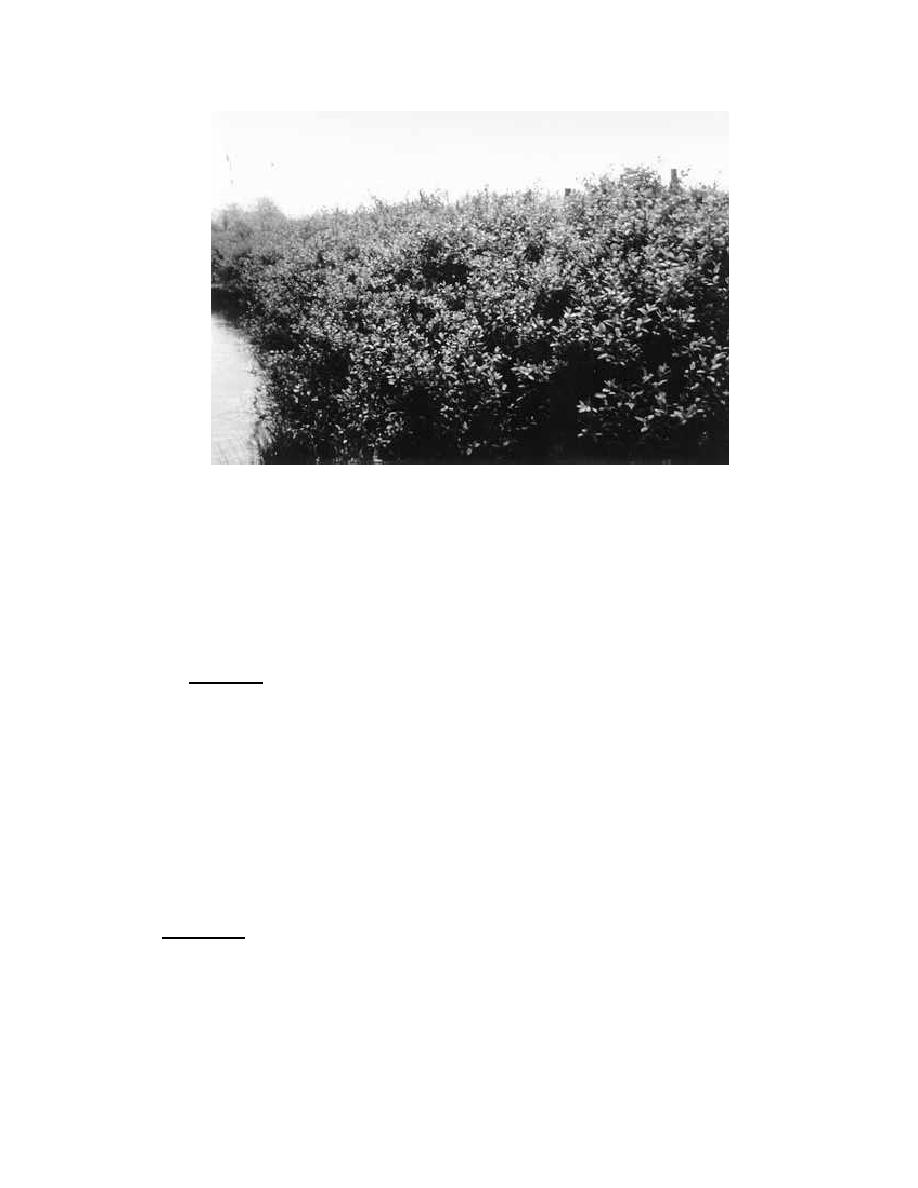
|
|

|
||
 Appendix B: Bioengineering for Streambank Erosion Control -- Guidelines
Figure 37c. Reach of Irish Creek stabilized with cuttings of
willow. Photo taken 4 growing seasons after planting.
Figure 37. Irish Creek, North Carolina, stabilized with cuttings of bankers and
streamco willow. (Photos courtesy of USDA Natural Resources Conservation
Service)
Root pads. Root pads are clumps of shrubbery composed of such species as willow
(shrubby forms), redosier dogwood, european alder ( Alnus glutinosa), and others. It is often
used in the splash zone as a part of root wads where the root pads are positioned in between
them. Root pads can also be used further up the slope into the bank and terrace zones.
Caution should be exercised in planting these during the dormant season. They can be
removed from harvest areas and placed at the project site with front-end loaders. "Veimeer"
type spades are sometimes used on root pads where species have deep penetrating roots
whereas front-end loaders are used on species whose roots spread out more at the surface.
Placement of root pads on slopes greater than 1V:6H should include securing the root pads
by driving 2-in diameter, 18 to 24-in long wooden stakes through the pads at 2 to 3-ft
intervals (Logan et al., 1979)
Bank Zone
This zone may be exposed to considerable flooding and current and wave action. If only
mild current and wave action is expected, sodding of flood-tolerant grasses like reed canagry
grass, buffalo grass (Buchloe dactyloides), or switchgrass (Panicum virgatum) can be
employed to provide rapid bank stabilization. Usually, the sod must be held in place with
some kind of wire mesh, geotextile mesh such as a coir fabric, or stakes. A soilless system
B-59
|
||
 |
||